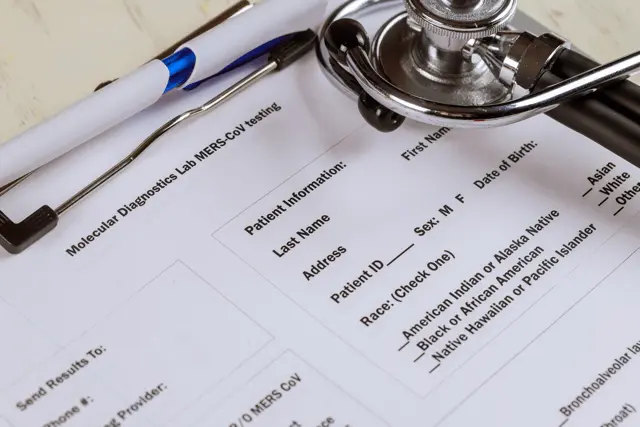Table of Contents
Unleashing the Power of Patient Registration: A Game-Changer for Strengthening the Revenue Cycle
Patient registration has long been considered a routine administrative task in healthcare organizations. However, when fully optimized, patient registration has the potential to become a game-changer for bolstering the revenue cycle. By harnessing the power of patient registration, healthcare facilities can not only improve efficiency and accuracy but also enhance revenue generation. This article explores the untapped potential of patient registration and the key strategies to maximize its impact on the revenue cycle.
Patient registration serves as the foundation of the revenue cycle by capturing crucial demographic and insurance information. However, many healthcare organizations fail to recognize the potential of this process beyond mere data collection. By implementing advanced registration tools and technologies, such as electronic health record systems and patient portals, healthcare facilities can streamline the registration process and facilitate the seamless exchange of information. Furthermore, leveraging real-time eligibility verification and electronic authorization tools can reduce claim denials and improve overall revenue integrity.
Another key aspect of unlocking the potential of patient registration lies in optimizing the patient experience. The registration process should be designed to be patient-centric, ensuring a smooth and hassle-free experience for individuals seeking care. By implementing self-service kiosks, mobile registration apps, and online pre-registration forms, healthcare organizations can streamline the check-in process, reduce waiting times, and enhance patient satisfaction. Additionally, capturing accurate patient information during registration enables targeted communication and personalized care, which can contribute to improved patient outcomes and loyalty.
Maximizing Revenue Cycle Efficiency: Harnessing the Untapped Potential of Patient Registration
To maximize revenue cycle efficiency, healthcare organizations must tap into the untapped potential of patient registration. One strategy is to integrate patient registration with revenue cycle management systems, allowing for seamless data flow and real-time updates. This integration enables the identification of potential billing and coding errors at the point of registration, minimizing revenue leakage and decreasing the likelihood of claim denials. Furthermore, it facilitates the implementation of upfront payment collection strategies, reducing accounts receivable and improving cash flow.
Another vital aspect of optimizing patient registration is the implementation of predictive analytics and machine learning algorithms. By analyzing historical data, organizations can identify patterns and trends in patient registration and claim submission, allowing for proactive interventions. Predictive analytics can help identify patients with a higher likelihood of non-payment or potential billing disputes, enabling targeted financial counseling and setting up appropriate payment plans. This proactive approach can significantly improve revenue cycle outcomes and overall financial performance.
In conclusion, patient registration holds vast untapped potential in bolstering the revenue cycle of healthcare organizations. By optimizing the registration process and leveraging advanced technologies, healthcare facilities can enhance efficiency, accuracy, and revenue generation. Additionally, prioritizing patient experience and integrating registration with revenue cycle management systems can further optimize revenue cycle outcomes. Embracing the power of patient registration is key to unlocking the full potential of the revenue cycle and ensuring the financial sustainability of healthcare organizations.
Patient registration is not just a bureaucratic formality but a strategic tool for revenue cycle optimization. By recognizing its potential and implementing the right strategies, healthcare organizations can achieve significant financial gains while also improving patient satisfaction and outcomes. Investing in patient registration is an investment in the future financial success of healthcare organizations. With the right approach, the revenue cycle can be strengthened, leading to improved financial health and a more sustainable future for healthcare providers.
FAQ
How does patient registration play a crucial role in bolstering the revenue cycle, and what untapped potential does it hold for healthcare organizations?
Patient registration is a critical entry point to the revenue cycle, influencing billing accuracy, reimbursement efficiency, and overall financial performance. The untapped potential lies in optimizing this process to reduce errors, enhance data quality, and expedite revenue realization.
Can you provide examples of specific challenges in patient registration that, when addressed, can lead to significant improvements in the revenue cycle for healthcare organizations?
Certainly, challenges such as incomplete or inaccurate patient information, delays in the registration process, and difficulties in insurance verification can impact the revenue cycle. Addressing these issues through streamlined processes and technology can result in substantial improvements.
In what ways can healthcare organizations leverage technology and innovation in patient registration to maximize revenue cycle efficiency?
Healthcare organizations can leverage technology for features like online pre-registration, automated insurance verification, and real-time eligibility checks. Innovations such as AI-driven data validation and integration with electronic health records contribute to efficiency gains and revenue optimization.
How does patient satisfaction tie into the revenue cycle, and what strategies can healthcare providers employ during patient registration to enhance both satisfaction and financial outcomes?
Patient satisfaction is linked to the revenue cycle as positive experiences contribute to timely payments and loyal patients. Strategies include offering convenient registration options, transparent billing information, and personalized communication to create a positive financial and healthcare journey for patients.
Are there regulatory considerations and compliance issues that healthcare organizations need to be mindful of when exploring improvements in patient registration to bolster the revenue cycle?
Yes, healthcare organizations must be mindful of regulatory considerations, including HIPAA (Health Insurance Portability and Accountability Act) compliance and adherence to industry standards. Implementing improvements in patient registration should align with these regulations to ensure data privacy and legal compliance.


